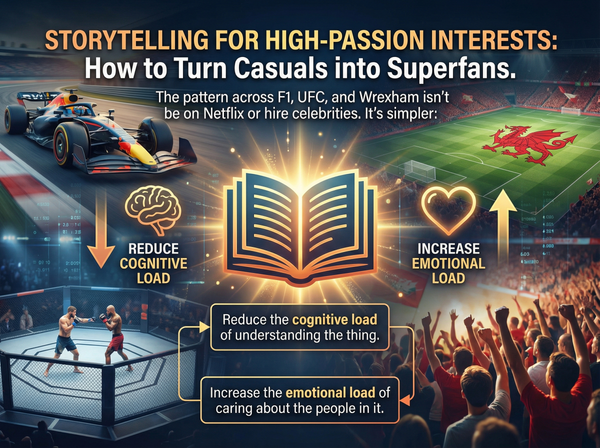Your Meta Ads Are Burning Cash If You’re Not Testing This Way
Guesswork is the enemy of a profitable ad account. Many advertisers treat Meta Ads like a lottery, hoping to stumble upon a winning creative.
The most successful brands, however, treat their ad campaigns like a science experiment, using a structured and systematic approach to testing that minimizes risk and maximizes return.
This detailed guide will walk you through a proven framework for testing your Meta Ads, from isolating variables to scaling your winners with confidence.
The Foundation: Your Hypothesis-Driven Approach
Before you even touch Ads Manager, you must have a clear hypothesis. A hypothesis is an educated guess about what you think will work and why.
- Weak Hypothesis: This ad will work well.
- Strong Hypothesis: We believe that showing a user-generated video testimonial will outperform our studio-shot ad because it feels more authentic and trustworthy, which will lead to a higher click-through rate.
By starting with a hypothesis, you're not just running a test; you're seeking to validate a specific idea, which makes your learnings more valuable and your strategy more deliberate.
Phase 1: The Creative Concept Test
Your goal here is to find a champion ad—a creative concept that drives strong performance and can be scaled.
The Setup for a Clean Test:
- Isolate One Variable: This is the golden rule. If you change more than one element (e.g., image and headline), you won't know which change caused the performance shift. Create an ad set with multiple ads, each with a single, distinct variable you want to test.
- Test Big Swings First: Focus on high-impact variables like ad format (video vs. carousel), ad angle (problem/solution vs. benefit-driven), or primary visual (user-generated content vs. stock photo).
- The Right Campaign Structure:
- Separate Campaigns: For the cleanest data, create a separate testing campaign with a dedicated budget. This prevents a high-performing business-as-usual ad from stealing all the spend from your new tests.
- Ad Set Budgets (ABO): By using Ad Set Budget Optimization (ABO), you can guarantee that each ad set (and therefore each creative) gets a fair share of the budget. This is vital for a true A/B test.
- Run Time and Budget:
- Let the Algorithm Learn: Don't turn off an ad after 24 hours. Meta's algorithm needs time to optimize. A test should run for at least 3-5 days to gather enough data and account for day-of-the-week performance fluctuations.
- Budgeting for a Win: A good starting point is to allocate enough budget to get at least 1-2 conversions per ad set per day. For example, if your average cost per conversion is $25, a daily budget of $50 per ad set is a reasonable starting point.
Key Metrics to Monitor:
- Click-Through Rate (CTR): Your first sign of success. A high CTR indicates your creative is compelling enough to stop the scroll.
- Cost Per Click (CPC): A lower CPC means you're getting more clicks for your money.
- Return on Ad Spend (ROAS) or Cost Per Acquisition (CPA): The ultimate measure of success. The ad with the best ROAS is your winner, regardless of other metrics.
Phase 2: Iterative Optimization & Finding Variations
Once you have a winner from Phase 1, it's not time to sit back. You now have a proven formula, and your next step is to create subtle variations to make it even better. This is where you test smaller, more nuanced elements.
- Test the Hook: For a winning video ad, create new versions with different opening seconds. The first 3-5 seconds are the most critical for grabbing attention.
- Refine the Ad Copy: Take your winning creative and test it with a short, punchy headline versus a more detailed one. Experiment with different calls-to-action (CTAs) like Shop Now versus Get the Offer.
- Change the Offer: Test your winning creative with a new offer. Does 10% off your first order work better than Free Shipping? This helps you understand which offer your audience responds to best.
This process is a continuous loop. Once you've optimized the winner, you can test a new creative concept against it to see if you can beat your current champion.
Phase 3: Scaling Your Winning Ads
Finding a winning ad is great, but scaling it profitably is where a business truly grows. Here are the two primary scaling methods:
1. Vertical Scaling
This is the simplest and most common method. You gradually increase the budget on a high-performing ad set.
- The 20-30% Rule: A good rule of thumb is to increase your budget by no more than 20-30% every 24-48 hours. Aggressive, sudden budget increases can trigger Meta's algorithm to re-enter the learning phase, which can lead to unstable performance and higher costs.
- Monitoring is Key: After each budget increase, monitor your key metrics (ROAS, CPA) closely. If performance starts to decline, pull back slightly or hold the budget steady to let the algorithm re-optimize.
2. Horizontal Scaling
This strategy involves duplicating your winning ad set and targeting new, but similar, audiences. This allows you to scale your spend without putting all your eggs in one basket.
- Expanding Audiences: If your winning ad is performing well for a 1% Lookalike Audience, you could duplicate that ad set and target a 2% or 3% Lookalike.
- Cross-Campaign Duplication: Duplicate your winning ad set and place it in a new campaign, targeting a different interest group or a new demographic. This allows you to scale to new audiences without disrupting the original, high-performing campaign.
Identifying and Combating Ad Fatigue
Even the best ads will eventually experience ad fatigue - a decline in performance as the same audience sees the ad too many times.
- Key Indicators: Look for a rising Frequency metric (the average number of times a person has seen your ad) combined with a falling CTR and rising CPA.
- The Solution:
- Refresh Creative: The most effective solution is to replace the old ad with a fresh, new creative that has a different look or message.
- Change the Audience: Exclude the people who have already seen your ad and target a new, similar audience.
- Dynamic Creative: Use Meta's Dynamic Creative Optimization (DCO) to automatically mix and match different ad components (images, headlines, descriptions) to create a variety of ads, keeping the creative fresh.
By implementing this systematic, data-driven approach to testing, you'll be able to consistently find winning ads, scale them profitably, and maintain a high-performing ad account.
Keep Crushing!
- Sales Guy


